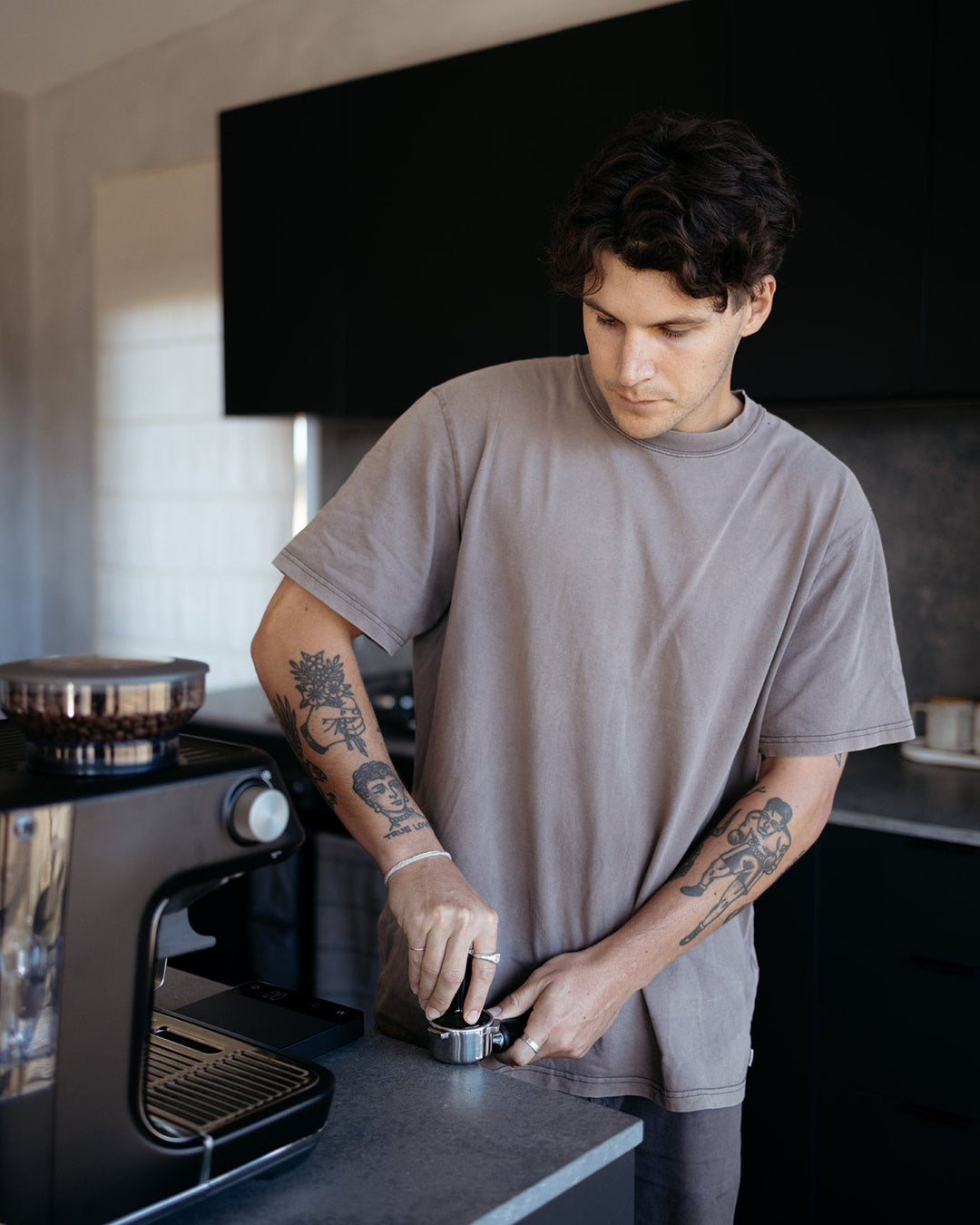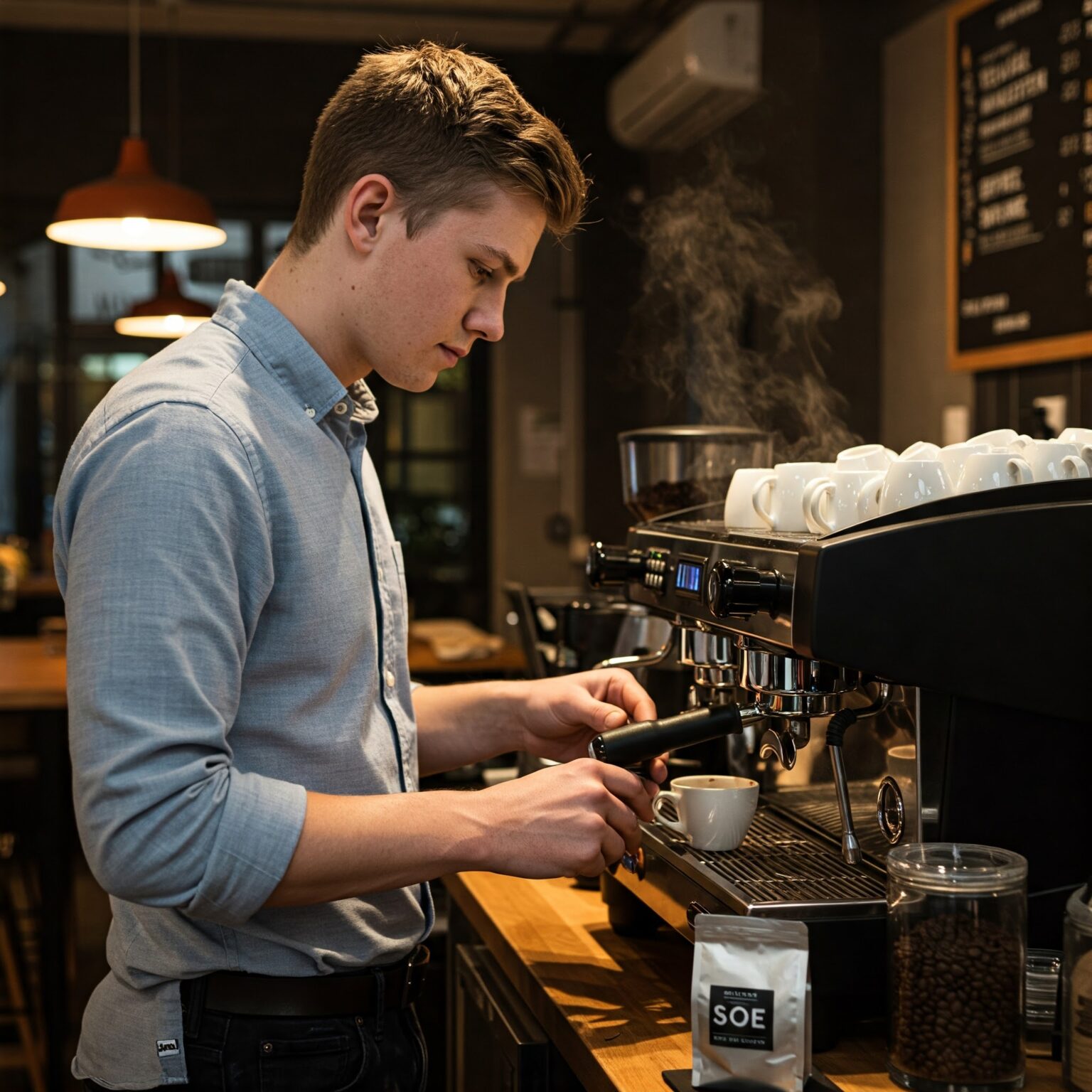SOE Single Origin Espresso – Highlighting Flavors from One Region
Coffee Beans Uncovered: Uncovering the Keys of Espresso and Blended Coffee Beans
When you consider coffee, what enters your mind? Is it the rich fragrance of coffee or the complexity of a well-crafted mix? Comprehending the subtleties of coffee beans can change your experience. Each range, from Arabica to Robusta, holds its very own keys. As you discover further, you'll discover just how these beans form tastes and effect sustainability. What might you find about your following mug?
The Beginnings of Espresso: A Historic Viewpoint
Although espresso is currently a staple in coffee society worldwide, its beginnings map back to the early 20th century in Italy. You may be stunned to find out that the invention of coffee was driven by a wish for speed and effectiveness. In 1901, Luigi Bezzera patented the first coffee maker, aiming to brew coffee faster than traditional approaches. This technology swiftly caught the attention of Italian coffee enthusiasts, causing the espresso bars we are familiar with today.
Recognizing Coffee Beans: Features and ranges
When you consider coffee, it's necessary to recognize the various bean ranges and their special tastes. Each type brings a distinctive character to your mug, influenced by factors like roast degrees. Understanding these components can elevate your espresso experience substantially.
Coffee Bean Varieties
As you explore the world of espresso, you'll promptly uncover that not all beans are created equal; each range brings its very own special flavors and attributes to your mug. Arabica beans are recognized for their smooth, nuanced tastes and reduced high levels of caffeine content, making them a favorite among coffee connoisseurs. Each range provides something various, so exploring will certainly assist you discover your best coffee.
Flavor Profiles Clarified
Understanding the flavor accounts of various coffee beans can boost your coffee experience. Each bean selection supplies one-of-a-kind characteristics that influence fragrance, taste, and mouthfeel. As an example, Arabica beans often present a sweeter, more complex taste with tips of fruit and floral notes, while Robusta beans tend to be bolder, with nutty and natural touches.
When you check out single-origin beans, you might uncover distinctive local flavors-- Main American beans may be intense and citrusy, whereas Italian blends usually provide abundant, chocolatey notes.
Roast Levels Impact
Roast levels play a vital role fit the flavor and scent of espresso beans, influencing your total coffee experience. With light roasts, you'll uncover brilliant acidity and much more pronounced fruity notes. As you relocate to medium roasts, you'll enjoy a balanced profile that showcases sweet taste and complexity. Dark roasts, on the various other hand, commonly present abundant, bold tastes with a smoky surface, but they can mask the beans' integral attributes. Understanding these roast levels helps you select the coffee that suits your preference preferences. Trying out different roasts can cause delightful discoveries, boosting your gratitude for coffee. So, do not be reluctant to discover various roast levels and discover your perfect mug!
The Art of Blending: What Makes Blended Coffee Distinct
What makes blended coffee so interesting? You can experiment with different combinations to boost sweet taste, level of acidity, and body, resulting in a brew that's richer and much more complex than a single-origin coffee.
Mixing also permits you to provide to diverse preference choices. You can craft a blend that's smooth and smooth or one that's vibrant and durable, relying on your audience. Plus, mixing can aid preserve consistency, supplying a trustworthy taste experience no matter of seasonal variations in beans. So, whether you're a home or a barista brewer, mastering the art of blending opens a world of creative thinking and taste possibilities, making your coffee experience truly one-of-a-kind - SOE.
Taste Accounts: Tasting Notes of Espresso vs. Blended Coffee
Combined coffee provides a globe of flavor possibilities, however when it concerns coffee, you're taking a look at an extra focused experience. Espresso commonly showcases bold, abundant tastes with a thicker mouthfeel. You might observe notes of dark delicious chocolate, caramel, or perhaps hints of fruit, depending upon the beans. The strength can be both invigorating and satisfying.
On the other hand, blended coffee offers an intricate tapestry of tastes. You can explore a selection of tasting notes, from wonderful and nutty to flower and fruity. Each blend can provide something check this unique, usually incorporating beans from various regions to develop a well balanced profile.
While coffee provides a punch, blended coffee invites you to savor important link the subtleties. Whether you choose the robust toughness of coffee or the intricate flavors of mixed coffee, each mug informs its own story, waiting on you to uncover.
Brewing Techniques: Improving Your Coffee Shot
To attain the ideal coffee shot, understanding the developing methods is essential, as also minor changes can significantly influence the flavor and quality. Begin by making use of fresh, high-quality coffee beans; grind them right before brewing for maximum taste. Aim for a fine grind, concerning the uniformity of common salt, to guarantee ideal removal.
Following, focus on your water temperature; it must be between 195 ° F to 205 ° F. Too warm or too chilly can ruin your shot. Usage about 18-20 grams of coffee for a dual shot, and tamp it evenly with strong pressure to develop an uniform puck.
Lastly, control your extraction time; go for 25-30 secs. A longer extraction can lead to anger, while also brief can lead to sour tastes. Practice these strategies continually, and you'll refine your abilities, accomplishing that rich, full-bodied coffee shot you hunger for. Take pleasure in the trip!
The Function of Roast Levels in Coffee and Blended Coffee
After grasping the developing methods for coffee, it's time to ponder exactly how roast degrees affect the flavor profile of your coffee. The roast level can considerably change your coffee's body, aroma, and preference. Light roasts have a tendency to highlight the coffee's beginning, using bright level of acidity and fruity notes, while tool roasts equilibrium level of acidity and sweet taste, producing a well-rounded taste. Dark roasts, on the various other hand, bring out bold, abundant flavors with lower level of acidity, usually creating chocolate or great smoky touches.

Exploring Sustainability: Ethical Sourcing of Coffee Beans
When you pick coffee, you're not just picking a taste; you're making an option regarding the effect on farmers and the environment. Recognizing Fair Trade practices, chemical-free farming techniques, and accreditation criteria can assist you sustain lasting coffee sourcing. Let's discover exactly how these factors add to a much more honest coffee experience.
Fair Trade Practices
Fair Profession practices play a vital role in guaranteeing that coffee beans are sourced morally and sustainably. When you select Fair Profession coffee, you sustain farmers who get reasonable wages and job in safe conditions. This commitment to honest sourcing aids combat hardship and advertises community advancement in coffee-growing areas. You'll find that Fair Profession accreditation additionally encourages ecologically pleasant farming techniques, as manufacturers are incentivized to safeguard their land and sources. By going with Fair Profession brands, you're not just appreciating a rich cup of coffee; you're making a favorable influence on the lives of those who grow it. Your selection issues, and it connects you to a worldwide motion concentrated on justness and sustainability in the coffee market.
Organic Farming Methods
As you explore the globe of ethical coffee sourcing, natural farming techniques emerge as a vital component of sustainability. In addition, it typically leads to more powerful, healthier coffee plants, resulting in richer tastes in your cup. When you choose for organic coffee, you're making an aware choice that profits both the planet and your palate.
Qualification Standards Explained
Comprehending certification criteria is vital for anyone interested in fairly sourced coffee. These criteria, such as Fair Trade, Jungle Partnership, and USDA Organic, assurance that coffee is expanded under sustainable methods. When you choose licensed coffee, you sustain farmers that comply with honest labor techniques and environmental security.
Fair Profession accreditation concentrates on providing fair salaries and working conditions, while Jungle Partnership stresses biodiversity and community preservation. USDA Organic ensures that no artificial plant foods or chemicals are used. By acquainting yourself with these accreditations, you can make enlightened selections that straighten with your worths. Next time you're at your local coffee shop or supermarket, look for these labels, and feel great recognizing your coffee acquisition positively impacts neighborhoods and the atmosphere.
Frequently Asked Concerns


How Does Elevation Impact the Growth of Coffee Beans?
Altitude impacts coffee bean development by affecting temperature level and climate. Higher altitudes commonly create denser beans with even more facility tastes, while reduced altitudes can cause faster development yet much less tasty results. You'll taste the difference!
What's the Distinction In Between Arabica and Robusta Beans?
Arabica beans are sweeter and more intricate, while Robusta beans have a stronger, harsher flavor with higher high levels of caffeine content. You'll discover Arabica preferred for specialty coffees, whereas Robusta's typically used in immediate coffee and espresso blends.
Can Coffee Beans Spoil or Lose Taste In Time?
Yes, coffee beans can go poor and shed flavor gradually. They'll become stagnant if you keep them poorly or maintain them too long. Constantly keep your beans in an airtight container far from light and moisture.
What Are the Wellness Benefits of Alcohol Consumption Espresso?
Consuming espresso increases your energy, boosts psychological quality, and may reduce the risk of certain diseases. It's rich in antioxidants, supports metabolic process, and can boost mood, making it a helpful option for your daily regimen.
Just How Does Water Top Quality Influence Coffee Extraction?
Water quality substantially affects coffee extraction. It influences the solubility of oils and tastes, affecting taste and fragrance. Utilizing filtered water can boost your espresso, making certain a balanced and delightful mug each time you brew.
Coffee Beans Uncovered: Finding the Secrets of Espresso and Blended Coffee Beans.
Understanding the taste accounts of various coffee beans can raise your coffee experience.Roast degrees play a necessary function in shaping the taste and aroma of coffee beans, influencing your general coffee experience (SOE).Combined coffee offers a globe of flavor opportunities, yet when it comes to coffee, you're looking at a more focused experience.After mastering the brewing methods for espresso, it's time to ponder exactly how roast levels affect the taste profile of your coffee